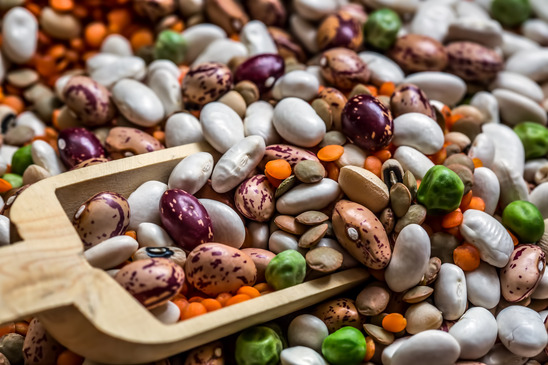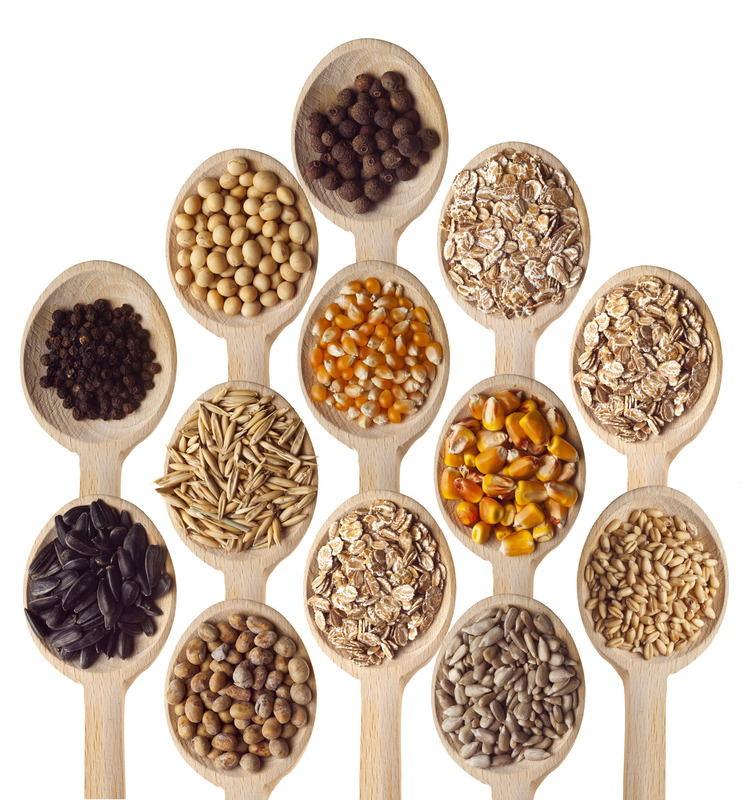A low-carbohydrate diet is becoming increasingly popular for those who wish to eat healthy and/or to lose weight. As we wrote before, there is a lot of scientific evidence suggesting that a low-carb diet is more efficient and healthier than a low-fat diet. Not only does a low-carb diet contribute to weight loss, it also prevents or even treats some diseases. Importantly, following a low-carb diet doesn’t necessarily mean starving or refraining from the majority of foods. Quite the contrary—you are allowed to eat as much as you want, on one condition: you avoid foods that are rich in high carbohydrates, such as breads, pastas, sweets, and starchy foods.
Since staple foods like rice, potatoes, and even bread should be avoided, people following low-carb diets consume much more meat, fish, eggs, and dairy products, as well as grains, nuts, and fats. However, those following vegetarian and vegan regimens are left with limited options.
Vegetarians (those who simply do not eat meat and fish, but can eat eggs and dairy products) and vegans (who do not eat any product derived from animals) are in for a particular challenge. A low-carb diet will prove much more of a trial for them. Firstly, they have to avoid high-carb intake and secondly, they have to eat enough proteins. Protein sources are limited for those refraining from meat consumption. It’s still possible to have a very rich and balanced diet, but it demands more exploration and reading. The results, however, are rewarding: the vegan and vegetarian diet is full of rare vegetables and grains.
The variety of low-carb foods available to vegetarians and vegans is enormous. It includes vegetables, fruits, nuts and seeds, legumes, and grains. Among them, grains, nuts, and legumes are those rich in both protein and carbohydrates. It is worth knowing the difference in their compositions in order to choose wisely and avoid high-carbohydrate and low-protein foods. However, it’s not a good idea to eliminate them completely.
Legumes are great replacement of meat in vegetarian diet. They are rich in protein but low in fat and contain no cholesterol unlike proteins derived from animals. They have two times more proteins than grains and are great source of calcium, vitamins B (including B12), iron, zinc, folate, potassium and magnesium.
The content of proteins in the legumes are in bold in the table below. It’s set in the decreasing order. It’s worth noticing that soybean has the best protein to carbohydrates ration.
All values are for 100 g portion of cooked legumes
| energy (kcal) | protein (g) | total lipid (g) | carbo hydrates (g) | fiber (g) | sugars (g) | |
|---|---|---|---|---|---|---|
| soy bean | 173 | 16.64 | 8.97 | 9.93 | 6 | 3 |
| pinto beans | 143 | 9.01 | 0.65 | 26.22 | 9 | 0.34 |
| chick peas | 164 | 8.86 | 2.59 | 27.42 | 7.6 | 4.8 |
| kidney beans | 127 | 8.67 | 0.5 | 22.8 | 7.4 | 0.32 |
| split peas | 118 | 8.34 | 0.39 | 21.1 | 8.3 | 2.9 |
| chana dal | 146 | 8.28 | 2.22 | 23 | 0.48 | |
| navy beans | 140 | 8.23 | 0.62 | 26.05 | 10.05 | 0.37 |
| black eyed peas | 116 | 7.73 | 0.53 | 20.76 | 6.5 | 3.3 |
| adzuki beans | 128 | 7.52 | 0.1 | 24.77 | 7.3 | |
| mung beans | 105 | 7.02 | 0.38 | 19.15 | 7.6 | 2 |
Source: http://ndb.nal.usda.gov/
* data from http://www.mendosa.com/chanadal.html
Grains and cereals
Grains and cereals are the fruits of the grass family of plants. They are the major source of carbohydrates in many cultures. Additionally, whole grains are rich in vitamins and minerals, as well as proteins, fats, and oils. The refining process, which removes bran and germ, decreases the amount of the majority of nutrients except carbohydrates.
The tables below show the nutrient content in some of the gluten-free and gluten-containing grains. Notice that some grains may have twice as much protein than others, e.g., wild rice vs. sorghum. This is especially important for vegetarians who need to get extra protein from plant foods.
The tables below show the nutrient content in some of the gluten-free and gluten-containing grains. Notice that some grains may have twice as much protein than others, e.g., wild rice vs. sorghum. This is especially important for vegetarians who need to get extra protein from plant foods.
Gluten free grains
All values are for 45g of dry grain which cooks up to about 3/4 to 1 cup of cooked grain.
| energy (kcal) | protein (g) | total lipid (g) | carbo hydrates (g) | fiber (g) | sugars (g) | |
|---|---|---|---|---|---|---|
| wild rice | 161 | 6.63 | 0.49 | 33.71 | 2.8 | 1.12 |
| quinoa | 166 | 6.35 | 2.73 | 28.87 | 3.2 | |
| amaranth | 167 | 6.10 | 3.16 | 29.36 | 3.0 | 0.76 |
| teff | 165 | 5.98 | 1.07 | 32.91 | 3.6 | 0.83 |
| buck wheat | 154 | 5.96 | 1.53 | 32.18 | 4.5 | |
| rolled oats | 171 | 5.92 | 2.93 | 30.47 | 4.5 | 0.45 |
| millet | 170 | 4.96 | 1.90 | 32.78 | 3.8 | |
| corn meal | 163 | 3.65 | 1.62 | 34.60 | 3.3 | 0.29 |
| brown rice | 166 | 3.57 | 1.31 | 34.76 | 1.6 | 0.38 |
| sorghum flour | 162 | 3.54 | 1.48 | 34.86 | 3.0 | 0.87 |
Source: http://ndb.nal.usda.gov/
Gluten-containing grains
All values are for 45g of dry grain which cooks up to about 3/4 to 1 cup of cooked grain.
| energy (kcal) | protein (g) | total lipid (g) | carbo hydrates (g) | fiber (g) | sugars (g) | |
|---|---|---|---|---|---|---|
| spelt | 152 | 6.56 | 1.09 | 31.59 | 4.8 | 3.07 |
| kamut | 152 | 6.54 | 0.96 | 31.76 | 5.0 | 3.53 |
| wheat, durum | 153 | 6.16 | 1.11 | 32.01 | ||
| triticale | 151 | 5.87 | 0.94 | 32.46 | 6.6 | |
| wheat, red | 147 | 5.67 | 0.69 | 32.03 | 5.5 | 0.18 |
| barley hulled | 159 | 5.62 | 1.04 | 33.07 | 7.8 | 0.36 |
| bulgur | 154 | 5.53 | 0.60 | 34.14 | 8.2 | 0.18 |
| wheat, hard white | 154 | 5.09 | 0.77 | 34.16 | 5.5 | 0.18 |
| rye | 152 | 4.65 | 0.73 | 34.14 | 6.8 | 0.44 |
Source: http://ndb.nal.usda.gov/
Nuts
Nuts are very rich source of various nutrients. Their high protein and oil content makes them a fantastic choice for vegetarians and vegans. Full of minerals and vitamins they can be eaten every day. The best choice is eating raw nuts as roasting process, which uses high temperatures, destroys their natural oils and antioxidants.
The table below shows the nutrients content in nuts. Bear in mind that peanuts are considered legumes. They constitute a rich source of protein with relatively low level of carbohydrates.
All values are for 100g.
| Name | energy (kcal) | protein (g) | total lipid (g) | carbo hydrate, by difference (g) | fiber (g) | sugars (g) |
|---|---|---|---|---|---|---|
| pistachio | 562 | 20.27 | 45.39 | 27.51 | 10.3 | 7.66 |
| cashew | 553 | 18.22 | 43.85 | 30.19 | 3.3 | 5.91 |
| peanuts | 567 | 25.8 | 49.24 | 16.13 | 8.5 | 4.72 |
| macadamia | 718 | 7.91 | 75.77 | 13.82 | 8.6 | 4.57 |
| almonds | 579 | 21.15 | 49.93 | 21.55 | 12.5 | 4.35 |
| hazelnuts | 628 | 14.95 | 60.75 | 16.7 | 9.7 | 4.34 |
| pecans | 691 | 9.17 | 71.97 | 13.86 | 9.6 | 3.97 |
| pine nuts | 673 | 13.69 | 68.37 | 13.08 | 3.7 | 3.59 |
| walnuts | 654 | 15.23 | 65.21 | 13.71 | 6.7 | 2.61 |
| brazilnuts | 659 | 14.32 | 67.1 | 11.74 | 7.5 | 2.33 |
You can read more about nuts here.
Source: http://ndb.nal.usda.gov


